Believe it or not, I have another fruitcake type food item to tell you about.
Seriously, fruit was like the most coveted Christmas item way back when.
Stollen is a German specialty eaten at Christmas that’s related to panettone, fruitcake, King cake, babka, and dreikonigsbrot. All these cakes were developed in medieval times and were reserved for the holidays because they were expensive to make. The most common and most famous stollen are from Dresden, Germany.
Stollen is a yeast bread made with nuts, raisins, currants, candied orange and lemon peel, and lots of butter. Other possible ingredients include orange and lemon zest, cardamom, cinnamon, nutmeg, and mace or cloves. Some people choose to soak the dried fruit in brandy or rum before adding it to the dough, but that’s entirely optional. It’s rolled out with a thinner middle and thicker outsides, folded in, and dusted with powdered sugar and some have a filling of marzipan wrapped inside.
The word originates from the Middle High German “stolle” from the Old High German word “stollo.” Stollo means post, support, or boundary stone for a city. Some historians think that it could also be the entrance to a mine because it reminded the locals of entrances to silver and tin mines in Dresden.
Stollen goes by several different names, the most common being (obviously) “stollen.” There’s also strutzel, striezel, stutenbrot, and christstollen. The name “christstollen” comes from the loaf’s resemblance to baby Jesus wrapped in swaddling cloths.
I sort of hit upon two different origin stories that I couldn’t seem to reconcile. The one story claims stollen was created early in the 14th century while the other claims it originated in the early 15th century. The second story seems a little more plausible, but I’ll share them both.
Origin Story Number One:
Stollen was invented in 1329 as a result of a contest created by the Bishop of Naumburg in the Thüringen region. He asked the bakers in Dresden to create a most delicious pastry for special occasions, specifically Christmas. The bakers made breads with butter, sugar, raisins, citron, and other special ingredients and spices. The Bishop enjoyed it so much that he ordered a store of grain to be reserved just to make stollen.
Stollen was first mentioned in writing in 1330 in Naumburg an de Saale, where it was made by a baker’s guild with episcopal privilege. There is a mention of it in Dresden in 1400, but it didn’t become widespread until the next century.
Origin Story Number Two:
Stollen was created as a Christmas pastry in the Saxon Royal Court in 1427 to symbolize the Christ child. It was simply called “striezel,” which means “loaf.” Since it was served during the Advent fast, the Catholic Church dictated how it was prepared, so it was made of only flour, yeast, turnip oil, and water. There was no butter or sweet ingredients, such as raisins, candied peel, or almonds. Since butter and other rich ingredients were banned, the bread was pretty much a tasteless lump. Still, large stollens, weighing up to 30 pounds, were created for the Royal Court’s celebrations.
A similar stollen was mentioned in writing in a 1474 bill from the Christian Hospital of St. Bartholomew in Dresden. That particular stollen was called a “cake for the fasting period” and was recorded as being made with only flour, oats, and water as the Catholic Church required.
Stollen continued to be made without any other ingredients until Electoral Prince Ernst of Saxony and his brother Duke Albrecht had enough. They sent a request to Pope Nikolaus V to revoke the inconvenient “butter ban” that grated on the nerves of Saxon bakers during the Advent. Five popes came and went before, finally, Pope Innocenz VIII replied in 1491 (40 years later!) with a letter now known as the “butterbrief” or “butter-letter.” His Excellency declared that stollen could use both butter and milk “with a clear conscience and with God’s blessing,” but only after making the “appropriate penance.” (What’s Cooking America?)
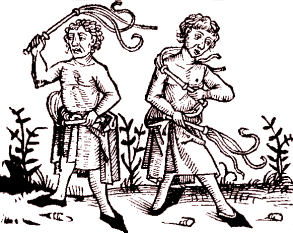
Hey guys, in order to use butter during the Advent, I'm gonna need you to beat yourselves with whips. Cool?
They had to pay a fine. Because, duh, doesn’t everyone have to pay a fine to use butter? That “butter money” was used to build the Freiberg Cathedral. Here’s a website with a link to the complete letter, which is in German, and nearly impossible to see.
It took another couple of years after the ban was lifted for a baker named Heinrich Drasdo in Torgau to add extra sweet ingredients, like fruit and nuts. He named his stollen the Drasdoer Stollen, and it became famous all over Saxony. In 1500, christstollens were sold at the Striezelmarkt in Dresden, the oldest German Christmas fair. Stollen became so special, to Dresdner’s in particular, that special stollen utensils (like the Stollen Knife) were made to cut and serve it.
And here ends the conflicting origin stories.
But wait! There’s more! (And this time everyone agrees…)
By the 16th century, Christmas stollens were the celebratory cake. Traditionally, a family would keep the first slice of stollen cut in order to ensure that they could afford to buy a stollen for the next year. The last piece was saved to ensure the family had enough food for the year. Stollen bakers in Dresden would bake and deliver giant stollens to the King of Saxony for Christmas. In 1560, two 5-foot stollens weighing in 36 pounds, made by eight bakers, was delivered to the palace by eight journeymen for the Christmas festivities. The tradition of making large stollen for the monarchy to enjoy during the holidays continued until 1918 when the monarchy fell.
If you think a 36 pounder is impressive, wait till you hear about the stollen Friedrich August I, aka August the Strong, Elector of Saxony and King of Poland, ordered.

August the Strong by Louis de Silvestre. They called him "the Strong" because of his intense eyebrows.
In 1730, August the Strong decided to throw a huge festival at the military camp of Zeithainer Lustlager lasting from May 31st to June 28th. The festival, which went by the same name, covered no less than 1,000 hectares (2,471.053 acres) and took place “near the cities Riesa and Großenhain between the villages Zeithain, Glaubitz und Streumen not far from the border between Saxony and Brandenburg” (Dresden Stollen Festival). The purpose of the camp and the festival was not, as it would seem to the untrained eye, to demonstrate wealth and splendor, but rather military strength as well as the managerial skills of the generals and officers. But, since it was held at that time period, it was extremely lavish and in the Baroque style. Think “The Inside of Versailles” lavish.
Guests from all over Europe attended. There were 20,000 guests in all, including 47 princes and dukes, 69 counts, 38 barons, and Friedrich Wilhelm I, the King of Prussia and his 150 Prussian officers. Mr. the Strong really wanted Friedie (I totally just nicknamed him that) as an ally in his territorial claims against the Habsburger Donaumonarchie. In addition to the 20,000 guests, there were 30,000 men in 30 infantry battalions and 50 cavalry squadrons present. It was the biggest military review in Europe and was known as the greatest Baroque festivity of the time. There were military exercises, Italian singers, French actors, decorated boats cruising the river Elbe, five hour long fireworks, comedies, operas, FREE BEER!!, and 160 oxen and countless deer and pheasants were roasted.
Talk about decadent. Also, FREE BEER!!
But that’s not all. In an effort to really “Wow!” his guests, August commissioned the largest stollen ever attempted by anyone. The result was a stollen orchestrated by master baker Zacharias of the Mühlberg bakery.
In addition to Zacharias, 100 master bakers and their assistants helped create the monstrosity. It took them an entire week. The court architect, Pöppelmann, had to build a special oversized stollen oven in order to bake it. It took over 6 hours. The finished product was 27 feet long, 18 feet wide, and a foot high.
Oh, and it weighed 1.8 tons.
That’s 3,960 pounds.
That’s a lot of stollen.
The stollen was pulled to the festival by 8 horses attached to a specially made cart. A specially made Stollen Knife was forged to cut it (which, by the way, had to be done by the court carpenter). Everything about this stollen was “specially.”
While it was hugenourmous, the stollen wasn’t quite as palatable as the stollen we know today. It had significantly different ingredients and was more of a white bread than a cake and the baking process produced some rather undesirable results. The way it was cooked gave it a hard crust and a soft, almost doughy inside, making it hard to cut and eat. But who cares!? It was a giant freakin stollen! That, to me, screams “MILITARY POWER!!!”

This giant cookie makes me realize that North Carolina is a huge military power. The cookie was created on May 17, 2003 in Hendersonville, North Carolina by the Immaculate Baking Company.
Today’s annual Dresden Stollen Festival is designed after Zeithainer Lustlager. It’s held every Saturday prior to the 2nd day of Advent. Yes, I will be telling you all about that.
By the 20th century, the Dresden stollen had become the slightly sweet Christmas pastry that’s eaten today. By World War II, it was being packaged and exported in metal sheet boxes over the Atlantic to both North and South America.
Here’s a video about how to make a stollen:
Here’s a slightly better video about how to make a stollen:
I love Omi.
I think it’s only fair to warn you now that if your stollen doesn’t have the gold seal of approval from the Dresdner Stollenschutzverband e.V (Dresdner Stollen Trade Protection Association) then it is not an authentic, handmade Dresden stollen. Only 150 bakeries have the gold seal and they all have to follow certain requirements when making their pastries. First and foremost, it must be made in Dresden.
Then:
“For every 10 grams of flour, the Dresdner Stollen must contain at least 3 grams of butter or milk fat, 7 grams of dried fruits and candied orange and lemon peels, and 1 gram of almonds. Only those Stollen that meet these requirements can be called “Dresdner Stollen ” and carry the official Dresdner Stollen seal” (German Food Guide)
You don’t mess with the Stollenschutzverband.
While the general ingredients (and the amounts mentioned above) remain the same, every stollen baker has inherited his or her own family recipe. One recipe might use a little more spice while others may throw in some of that orange zest, and there’s always room for a little rum or brandy. There are a couple different types of stollen:
- Almond stollen (mandelstollen) – contains more almonds
- Butterstollen
- Marzipanstollen – has marzipan inside
- Persipanstollen – contains persipan, which is made with apricot or peach kernels
- Poppyseed stollen (mohnstollen)
- Nut stollen (nuss-stollen)
- Quarkstollen – contains quark, a type of fresh cheese
- Schittchen – Stollen in the German state of Thüringen, considered a specialty of the city of Erfurt
And then there’s the Dresden Stollen Festival.
This now annual event was originally supposed to be a one-time PR event in 1994 for the city of Dresden and it’s signature pastry. Dr. Peter Mutscheller, a Saxon art and culture expert, ran across some pictures and reports of the Zeithainer Lustlager festival from 1730. He decided that it was high time for a similar festival featuring traditional stollen to take place. Mutscheller worked with Dresden bakers and pastry chefs, a PR company, and the Stollenschutzverband to get it together and it was scheduled to take place during the Striezelmarkt. The event was so successful that Mutscheller and his company, Hommage Dresden, with the cooperation of the Stollenschutzverband, decided to make it a yearly event.
Now, the festival gets around 700,00 visitors from all over the world annually. Travel agencies have even begun putting together packages specifically for the Stollen Festival. The spectacle is broadcasted on all the German TV stations and even some American and Japanese TV channels as well. In addition to promoting the city, the festival is meant to showcase the skills of Dresden craftsmen and has become a sort of show of traditional Saxon handicraft.
There’s even the Dresdner Stollenmädchen, the Dresden Stollen Maiden, who is to stollen what the Budweiser girls are to underwhelming beer. The position, originally created during the 2nd festival just for fun, has become a coveted station. She is the most photographed person during the festival and also a handy advertising tool. A jury headed by the president of the festival’s PR firm elects the Stollenmädchen in October. Candidates are baker or pastry chef trainees at the Vocational School for Nutrition in Dresden. To qualify, she must have good school performance, knowledge of the Dresden stollen and the festival, and a love for the city.
It also helps if she’s pretty.
For twelve months, the Stollenmädchen represents Dresden’s baker and pastry chef trade and markets stollen by traveling through Germany, visiting towns, Christmas fairs, and other events. She also does radio and TV interviews promoting the German “Christmas Capital of the World.”
That’s all well and good, but what about the stollen?
Well, it’s big. It’s proportionately the same as a regular 4lb stollen and was designed by Professor Kurt Merker. Yea, it had to actually be designed. Professor Merker also designed the cart that carries the giant stollen and his involvement in the festival has earned him the nickname “the Stollen Professor.”
The stollen is made by combining many different stollen “plates,” individual loaves, using butter and sugar. For three weeks 60 ovens are kept burning to bake them all. It takes about 370 plates, each weighing 11-kilo (there are around 2.3lbs in a kilo), to make the stollen. Different bakers and pastry chefs make the individual plates using their own secret recipes, which have all passed the standards of the Stollenschutzverband.
All the pieces are joined together on the actual cart, like an enormous puzzle. Baking each plate individually keeps the stollen from becoming it’s poorly baked ancestor. There’s also no need to build a special oven. Professor Merker has designed tools and building constructions to make the process of putting the stollen together easier, but it still takes 6 hours. Once it’s done, it’s covered in a layer of icing.
The stollen of the first festival weighed 2,720 kilos and was recorded in the Guinness Book of World Records. The festival has since topped its own record several times, the largest being in 2001. It weighed 4,200 kilos and took 80 bakers and pastry chefs and 1.5 tons of flour, 2.5 million sultanas, 455 kilos of sugar, and 44 liters of Jamaican rum to make it. Its measurements are as follows:
Length: 4.75 meters
Width: 1.75 meters
Height: 0.90 meters
1,500 kilos wheaten flour
990 kilos seedless raisins (sultanas)
790 kilos butter
455 kilos sugar
200 kilos candied lemon peel
150 kilos almonds (sweet)
110 kilos icing sugar
95 kilos yeast
55 kilos almonds (bitter)
45 kilos lemon peels
44 kilos Jamaica rum
44 kilos powdered milk
30 kilos salt
5 kilos spices
After a lengthy ceremonial procession through the town, the Royal Master Baker and the Stollenmädchen make the first cut. They use a 1.2 meter long silver plated replica of the 1730 Dresden Stollen Knife. After it was used one time at August the Strong’s military bash, it was kept in the Dresden Royal Silver Vault (Hofsilberkammer) for more than 200 years. It disappeared in 1945 during WWII, but was recovered by Dr. Mutscheller. He tracked it down using only a copperplate engraving called “Praise and Glory for the Laudable Bakery Trade” as a clue. The engraving had a picture of the knife as well as a detail showing its measurements. You can also buy miniature replicas of the knife for your own normal sized stollen.
After the first cut is made, the rest of the stollen is cut into pieces and sold to tourists directly from the cart. In order to get their piece, visitors have to buy something called a Stollenthaler, which costs 3 euros. They are available all over the market and get exchanged for a piece of stollen. Part of the revenue of the giant stollen is given to charity.
In case you were thinking about hosting your own stollen festival, complete with giant knife and stollen, think again. The festival is patented. If you held one, it would be a stolen festival.
GET IT!?
Keep eating and asking, my friends.
Esther
Bibliography:
-Ayto, John. “Stollen.” An A-Z of Food and Drink. Oxford: Oxford University Press, 2004. 325. Print.
-“Dresdner Criststollen – History.” Apache Tomcat. Dresdner Stollen Geschichte, n.d. Web. 23 Dec. 2011. <http://cms.rosinenstollen.de/opencms/opencms/rosinenstollen/en/_header/geschichte/>.
-“German Food Guide – Stollen.” German Food Guide and Directory. German Food Guide, n.d. Web. 23 Dec. 2011. <http://www.germanfoodguide.com/stollen.cfm>.
-Olver, Lynne. “The Food Timeline–Christmas food history.” Food Timeline: food history & vintage recipes . Lynne Olver, n.d. Web. 23 Dec. 2011. <http://www.foodtimeline.org/christmasfood.html#stollen>.
-Larousse Gastronomique: the World’s Greatest Culinary Encyclopedia. New York: Clarkson Potter/Publishers, 2009. 1021. Print.
-“Stollen, history and recipes.” The Kitchen Project, The Complete Cooking Experience . The Kitchen Project, 6 Dec. 2007. Web. 23 Dec. 2011. <http://www.kitchenproject.com/german/recipes/Stollen/StollenHistory.htm>.
-Stradley, Linda. “Stollen, Dresden Stollen, Strutzel, Stutenbrot, Christmas Stollen, History of Stollen.” What’s Cooking America, Christmas Dinner Planning, Prime Rib Roast Dinner, Christmas Cookie Recipes. Linda Stradley, n.d. Web. 23 Dec. 2011. <http://whatscookingamerica.net/History/Cakes/Stollen.htm>.
-“The history of the “Christstollen from Dresden” – Bäckerei & Konditorei Gnauck.” Original Dresdner Stollen – Bäckerei & Konditorei Gnauck. Bäckerei & Konditorei Gnauck, n.d. Web. 22 Dec. 2011. <http://www.stollen-online.de/dresdnerstollen/geschichte-eng.htm>.
-“eDining.ca | Nova Scotia Restaurants, Wine, Dining, Food – Restaurant, Halifax, Dartmouth, Bedford, Nova Scotia.” eDining.ca. eDining.ca, 8 Dec. 2006. Web. 23 Dec. 2011. <http://www.edining.ca/326/articles/German_Stollen,_History_and_Tradition>.
Photos, in order of appearance:
-http://familyfun.go.com/recipes/fruit-cake-688931/
-http://www.mommykatie.com/2010/11/harry-david-holiday-review.html
-http://en.wikipedia.org/wiki/File:Stollen-Dresdner_Christstollen.jpg
-http://www.applepiepatispate.com/bread/stollen-recipe-dan-lepard/
-http://kochtopf.twoday.net/stories/5391387/
-http://www.germany.info/Vertretung/usa/en/04__W__t__G/04/03/00/Recipe__Stollen.html
-http://ukraine-foreign-policy.com/international-relations/un-will-not-store-their-grain-in-ukraine.html
-http://www.schreiber-pirna.de/Dresdner_Christstollen.448/
-http://members.virtualtourist.com/m/b8468/1091e/a/?o=3
-http://www.bakingishot.com/blog/easy-oat-cakes
-http://www.postiar.com/post/20781/sin-and-penance-in-the-middle-ages.html
-http://www.flickr.com/photos/dsorth20/3018812608/
-http://www.saechsischer-bote.de/news/id/1243.htm
-http://buyeragentsearch.com/wpress3/reason-for-buyers-broker-agreement-or-contract.html
-http://www.surfbirds.com/cgi-bin/gallery/search2.cgi?species=&photographer=&location=&county=papua%20new%20guinea
-http://en.wikipedia.org/wiki/File:August_II_the_Strong.PNG
-http://www.visitingdc.com/paris/queens-bedroom-versailles.asp
-http://thesplendorofthechurch.blogspot.com/2007/09/pavarotti-returned-to-catholic-faith.html
-http://www.bellenews.com/2011/08/17/world/gerard-depardieu-peed-in-front-of-an-aircrafts-passengers/
-http://www.bostonhassle.com/2011/12/01/tonight121-the-haven-free-beer-the-ioa-many-peoples-bandmems-of-quilt-boston-hassle-comp-listening-party/
-http://saboresdeljardin.wordpress.com/tag/stollen/
-http://caterpillarpublishing.com/?tag=great-white-sharks
-http://www.mtv.com/photos/exiled-ep-10-erin/1599145/3378728/photo.jhtml
-http://www.sodahead.com/fun/would-it-shock-you-if-i-told-you-lg-and-samsung-was-from-korea-not-japan/question-1530239/?link=ibaf&q=shock&imgurl=http://images.sodahead.com/polls/001530239/5119503128_Shocked_answer_1_xlarge.jpeg
-http://www.indyweek.com/indyweek/rollin-with-stollen/Content?oid=2726778
-http://www.dresdnerstollen.com/english/e_fotos/e_me02_2.htm
-http://recordsetter.com/world-record/cookie/544
-http://bayourenaissanceman.blogspot.com/2010/12/dresden-bakers-do-it-again.html
-http://hausaufgoblin.blogspot.com/2010/12/youve-stollen-my-heart.html
-http://www.cafe-maass.de/stollenschutzverband.html
-http://www.dresdnerstollen.com/english/e_fotos/e_fest/e_f01_5.htm
-http://www.forwarderexpress.com/?en-r-d-14434.html
-http://www.blackknighthistorical.co.uk/index.php/photo-gallery
-http://www.stollenfest.com/
-http://www.dnn-online.de/web/dnn/nachrichten/detail/-/specific/Das-Dresdner-Stollenmaedchen-58102982
-http://images.businessweek.com/ss/06/12/1214_xmassshopping/source/8.htm
-http://www.worldrecordsacademy.org/food/largest_stollen_Dresden_Giant_Stollen_set_world_record_101999.html
-http://www.cntraveller.com/photos/the-week-in-travel-pictures/travel-pictures-28-november/construction-of-giant-stollen
-http://www.kitchenproject.com/german/recipes/Stollen/StollenHistory.htm
-http://nicoledula.com/category/recipes
-http://bestuff.com/stuff/hamburglar


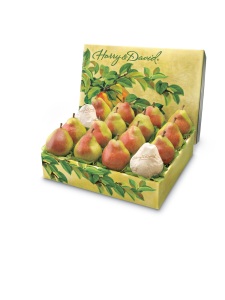
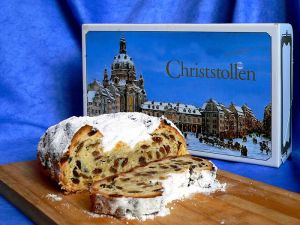


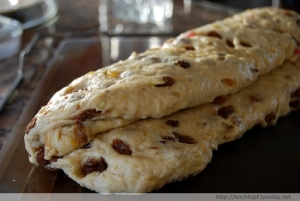
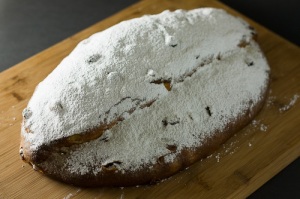
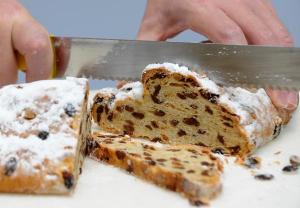

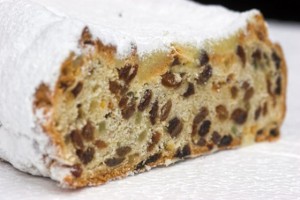
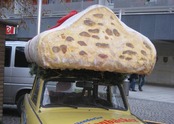
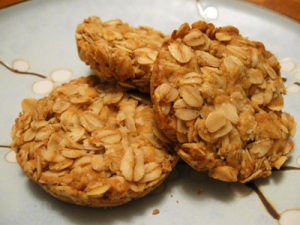












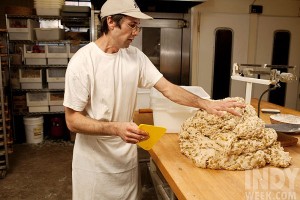
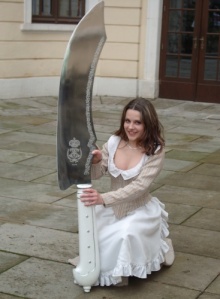
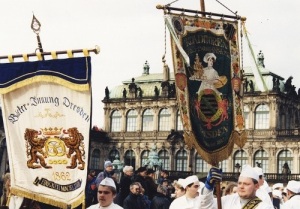
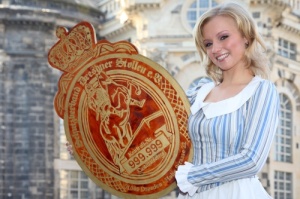








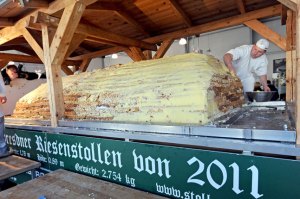

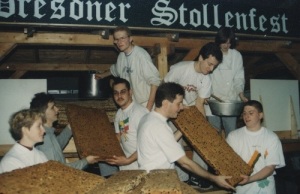
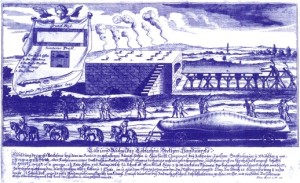

It’s a crime this post had no comments, so I decided to add one. I laughed from start to finish (not because I’m mildly inebriated, I assure you) well done and Happy Christstollen!
Thanks so much! I do think stollen is one of my better posts.
Glad you enjoyed it.
-Esther
I enjoyed this post too!! I never had heard of Stollen until my father in law bought one and brought it out on Christmas. Thanks for the research and story to teach me about it.
Fantastically creative and very informative! I first heard of and ate Stollen (marzipan type) from a Japanese baker in Japan. (I am from the US, and knew of fruitcake, but Stollen was never in my family’s traditions that I knew of.) I have since been curious about the meaning and origins of Stollen. In my searches on the internet today, I respond various stories, but several conflicted (as you also mentioned). Anyway, your posting brought all the threads together in one place and filled in a lot of extra and interesting info about the Dresden Stollen festival (which should not be “stolen”!!!) I loved your interspersed pictures, and the two videos were great, too. Thank you for your sense of humor, your creativity, and the wealth of info you have assembled, both in prose and in visuals (photos, and videos). It was a great read. Breaking it into short bites with photos interspersed kept my attention to the end. Thanks again. I will share a link to your post with some family members.
Thank you so much for your kind comment! I am quite proud of my Photoshops so I’m glad you enjoyed them as well. I plan to get back to this blog soon, but in the time being I’m glad it’s still enjoyable.
Happy reading!
-Esther
That’s a great resume about Stollens, you must have put a lot of effort into research! Was a pleasure to read, also liked the little jokes 😀
What an excellent article about stollen! Just stumbled upon your website whilst researching stollen (“How long to store it” or “Can I bloody eat it now?”) and had a really good time!